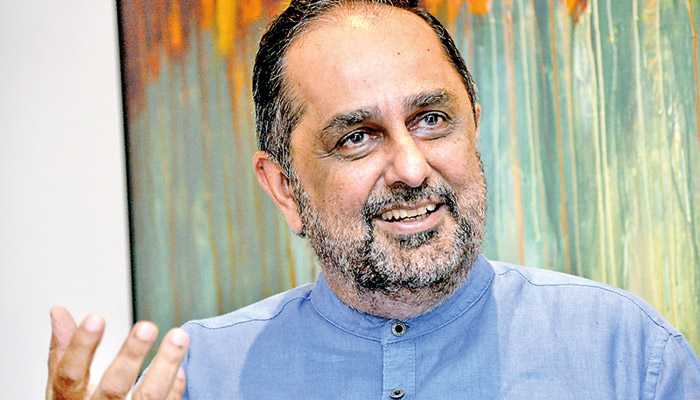Is there a threat of Talibanisation engulfing the entire region?I think it has already engulfed our region. I think there’s a need for a very clear thinking (on this issue of Talibanisation). In India, there are two kinds of terrorism: one is Islamic terrorism and the other Maoist terrorism. But this term terrorism, we must ask, what do they mean by it.
In Pakistan, I’m here to understand what they mean by this term. When we say we must fight the Taliban or must defeat them, what does it mean? I’m here to understand what you mean when you say Taliban. Do you mean a militant? Do you mean an ideology? Exactly what is it that is being fought? That needs to be clarified.
I think both needs to be fought. But if it’s an ideology it has to be fought differently, while if it’s a person with a gun then it has to be fought differently. We know from the history of the war on terror that a military strategy is only making matters worse all over the world. The war on terror has made the world a more dangerous place. In India, they have been fighting insurgencies military since 1947 and it has become a more dangerous place.
Swat and the Taliban boy
It is very important for me to understand what exactly is going in Swat. How did it start? A Taliban boy asked me why women can’t be like plastic bags and banned. The point is that the plastic bag was made in a factory but so was the boy. He was made in a factory that is producing this kind of mind(set). (The question is) who owns that factory, who funds it? Unless we deal with that factory, dealing with the boy doesn’t help us.
Water is the main issue
One danger in Pakistan is that we talk about the threat of Taliban so much that other important issues lose focus. In my view, the problem of water in the world will become the most important problem. I think big dams are economically unviable, environmentally unsustainable and politically undemocratic. They are a way of taking away a river from the poor and giving it to the rich. Like in India, there’s an issue of SEZs (Special Economic Zones), whereby the land of the people are given to corporations. But the bigger problem is that there are making dams and giving water to the industries. This way the people who live in villages by the streams and rivers have no water for themselves. So building dams is one of the most ecologically destructive things that you can do.
Fight over Siachen glacier
There are thousands of Pakistani and Indian soldiers deployed on the Siachen glacier. Both of our countries are spending billions of dollars on high altitude warfare and weapons. The whole of the Siachen glacier is sort of an icy monument to human folly. Each day it is being filled with ice axes, old boots, tents and so on. Meanwhile, that battlefield is melting. Siachen glacier is about half its size now. It’s not melting because the Indian and Pakistani soldiers are on it. But it’s because people somewhere on the other side of the world are leading a good life….in countries that call themselves democracies that believe in human rights and free speech. Their economies depend on selling weapons to both of us. Now, when that glacier melts, there will be floods first, then there will be a drought and then we’ll have even more reasons to fight. We’ll buy more weapons from those democracies and in this way human beings will prove themselves to be the stupidest animals on earth.
Money and the Indian elections
Whatever system of government you have, whether it is a military dictatorship or a democracy, and you have that for a long time, eventually big money manages to subvert it. That has begun to happen even in a democracy (like India). For example, political parties need a lot of publicity, but the media is also run by corporate money. If you look at the big political parties like the Congress and the BJP, you see how much money is being put out just in their advertising budgets. Now where does all that come from?
RSS and the Indian establishment
The RSS has infiltrated everything to a great extent. In India, we have 120-150 million Muslims and it’s considered a minority…It’s impossible to not belong to a minority of some sort in India. Caste or ethnicity or religion or whatever, in some way everyone belongs to a minority. The fights that many of us are waging against the RSS and against the BJP are to say that we live in a society which accommodates everybody. Everybody doesn’t have to love everybody, but everybody has to be accommodated. The RSS has infiltrated the (Indian) army as much as various kinds of Wahabism or other kinds of religious ideology have infiltrated the ISI or the armed forces in Pakistan. They are human beings like everyone else and they too get influenced.
Indian media and sensationalizing of news coming out from Pakistan
I think the media in both countries play this game. Whenever something happens here, they hype it up there, while when something happens there, they hype the news here. We say that we live in times of an information revolution and free press, but even then nobody gets to know the complete picture…
The Pakistani media is a little different from the Indian media. They stand on a slightly different foundation. But both share the problem of a lack of accountability…The trouble in India is that 90 per cent of their revenue comes from the corporate sector…there’s increasing privatization and corporatization of governance, education, health, infrastructure and water management. So in India you see an open criticism of governance, but very rarely criticism of corporations. It’s a structural problem. It’s not about good people or bad people. It’s just that you can’t expect a company to work against itself. This is a very serious issue which needs to be sorted out.
Is the Indian army a sacred cow?
The Indian army is quite a sacred cow especially on TV and Bollywood. But at the same time if you talk to the people in the Indian army, they say that they feel that the media is very critical of them. I don’t share that view. I think it is a sacred cow. People are willing to give them a lot of leeway.
Women and their fight for justice
When women fight for justice, we must fight for every kind of justice…We must fight for justice for men and justice for children. Because if you fight for one kind of justice and you tolerate another, then it’s a pretty hollow fight. You may not be able to fight every battle, but you should be able to put yourself on the line and say I believe this. Dawn
Post Disclaimer | Support Us
Support Us
The sailanmuslim.com web site entirely supported by individual donors and well wishers. If you regularly visit this site and wish to show your appreciation, or if you wish to see further development of sailanmuslim.com, please donate us
IMPORTANT : All content hosted on sailanmuslim.com is solely for non-commercial purposes and with the permission of original copyright holders. Any other use of the hosted content, such as for financial gain, requires express approval from the copyright owners.
 Sri lanka Muslims Web Portal Sri Lanka Muslims News Center
Sri lanka Muslims Web Portal Sri Lanka Muslims News Center




A thought-provoking article What is terrorism, she asks? I would say that its defining characteristic involves the killing of innocent non-combattants. That definition leads to the question why people commit terrorist acts, the question of what underlies such acts. The charge of terrorism is usually a way of evading such questions.
Roy says that in India everyone belongs to a minority in one way or another. The point has been made by others as well. The fact that in India there is no stable universally recognised majority could be one reason why over there they have not mucked up their ethnic relations as much as we have done.